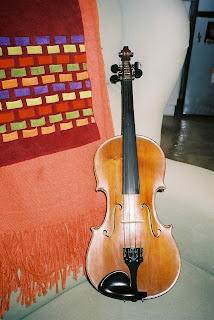During the three years I was in Japan, I studied shodo at the high school I taught at (Tottori Higashi koko) in Japan. During the first month of school, I was "urged" to attend classes once a week with Shubayama sensei. I was later told that I could probably never afford to take classes with Shubayama sensei and I was lucky to be getting the lessons for free. This did not mean much to me as I spent the majority of my time that first year in frustration and really not enjoying the free lessons very much at all.
Then something clicked and I can't really put my finer on it, but blam: suddenly the squiggly abstract lines made sense to me and I began to enjoy it. Shubayama sensei didn't speak a word of English and I barely spoke Japanese, but it was a friendship that surpassed language and culture. Oddly enough, the fact that we could barely communicate did not impede us becoming great friends at all.
The print on the left means "Success" and it was the last drawing I did in 1999. To give you an idea of the size, the photos below it are in 5x7 frames. It is probably the best shodo I have done, but it is not my favorite. The drawing on the right means "Ocean" I did this my first semester in Japan, in the Fall of 1996 and it is still my favorite. I grew up on an Island, have always swam in and loved the ocean and I am also a water sign. Shybayama sensei did not know any of this but still picked the perfect character for me to draw during my first few months in Japan.










